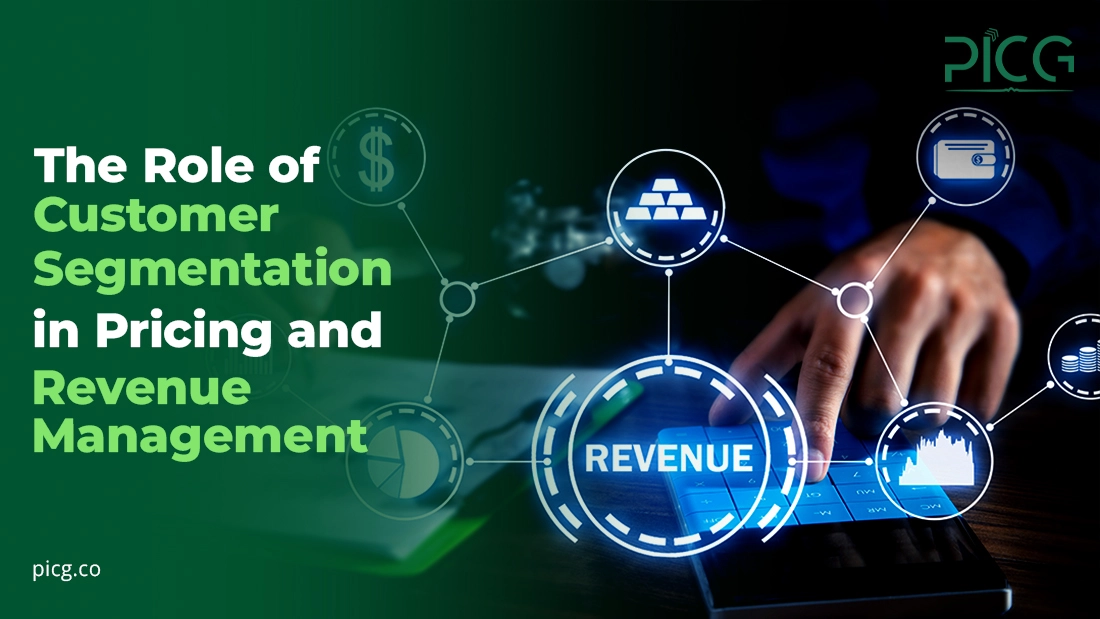


PICG

In the dynamic world of business, companies are continually seeking ways to optimize their pricing and revenue management strategies. One powerful tool that has gained prominence in recent years is customer segmentation. Customer segmentation involves dividing your customer base into distinct groups based on shared characteristics and behaviors. This blog delves into the significance of customer segmentation in pricing and revenue management and how it can drive profitability and customer satisfaction.
Understanding Customer Segmentation
Customer segmentation is the process of categorizing customers into homogeneous groups that exhibit similar characteristics, needs, and purchasing behaviors. These characteristics can range from demographic data like age, gender, and location to more nuanced factors such as buying habits, preferences, and spending patterns.
Enhanced Pricing Precision
One of the primary advantages of customer segmentation in pricing and revenue management is the ability to set prices more precisely. When businesses treat all customers uniformly, they often miss out on opportunities to capture additional value. Through segmentation, companies can tailor their pricing strategies to meet the unique needs and willingness to pay of different customer groups.
For example, premium or high-value customers may be willing to pay more for exclusive features or services, while price-sensitive customers may respond better to discounts or promotions. By customizing pricing strategies for each segment, businesses can maximize revenue without alienating customers or leaving money on the table.
Improved Profit Margins
Segmentation can also lead to improved profit margins. By identifying high-value customer segments, businesses can focus their efforts on serving these customers more effectively. This might involve offering premium products or services, enhancing customer support, or providing personalized experiences.
As a result, businesses can justify higher prices for these segments, leading to increased profitability. Conversely, for price-sensitive segments, companies can employ cost-effective strategies to maintain competitive pricing while still maintaining margins.
Demand Forecasting and Inventory Management
Customer segmentation can greatly enhance demand forecasting and inventory management. By understanding the purchasing behavior of different customer segments, companies can make more accurate predictions about which products or services will be in demand.
For instance, a retail company might notice that one segment prefers seasonal products, while another segment values staple items. Armed with this information, they can adjust their inventory levels and marketing efforts accordingly, reducing carrying costs and minimizing stockouts.
Personalized Marketing and Offers
Customer segmentation also plays a pivotal role in crafting personalized marketing campaigns and offers. When businesses understand the preferences and behaviors of each segment, they can create tailored marketing messages and promotions that resonate with specific customer groups.
Personalization can lead to higher conversion rates and customer loyalty. For example, an e-commerce platform might send tailored product recommendations based on a customer's previous purchases, increasing the likelihood of repeat business.
Enhanced Customer Satisfaction and Loyalty
By offering personalized experiences and catering to the unique needs of different customer segments, businesses can enhance overall customer satisfaction and build stronger customer loyalty. Satisfied customers are more likely to become repeat buyers and brand advocates.
Customer loyalty is particularly valuable in industries with high competition. When customers feel understood and valued, they are less likely to switch to competitors solely based on price. This long-term loyalty can lead to stable, recurring revenue streams.
Mitigating Risk
Customer segmentation also helps in risk management. By diversifying the customer base across various segments, companies can reduce their dependence on a single customer group. In case one segment is adversely affected by economic fluctuations or other external factors, the impact on overall revenue is less severe.
Challenges and Considerations
While customer segmentation offers numerous benefits in pricing and revenue management, it's not without challenges. Developing accurate customer segments requires robust data analytics and market research. Companies must also ensure that their segmentation strategies align with their brand image and customer service standards. Furthermore, it's essential to regularly reassess and update segments as customer preferences and market dynamics evolve.
Summing Up!
In conclusion, customer segmentation is a powerful tool in pricing and revenue management. It allows businesses to set prices more precisely, improve profit margins, enhance demand forecasting, and deliver personalized experiences. Ultimately, segmentation enables companies to maximize revenue while simultaneously improving customer satisfaction and loyalty. In today's highly competitive business landscape, understanding and leveraging customer segmentation is a key driver of success. Companies that embrace this approach are better positioned to thrive in an ever-changing marketplace.